Cold Calling Guide with Proven Tips and Examples [Backed by Data]
Cold calling — more than any other tactic in a sales professional’s toolkit, has a bad reputation.
… one that it may deserve because of poor execution.
In fact, cold calling is a powerful sales tactic that can be amazingly lucrative.
But few salespeople do it consistently. And even fewer do it well.
In this guide, we’ll cover everything you need to know to master cold calling, including how to prepare for a cold call, proven cold calling tips, how to follow up on a cold call, and common mistakes to avoid.
Here’s what we’ll cover:
- What Is Cold Calling?
- Does Cold Calling Work?
- The Psychology of Cold Calling
- How to Make a Cold Call
- Cold Calling Tips
- How to Follow Up Cold Calls
- Common Cold Calling Mistakes to Avoid
What Is Cold Calling?
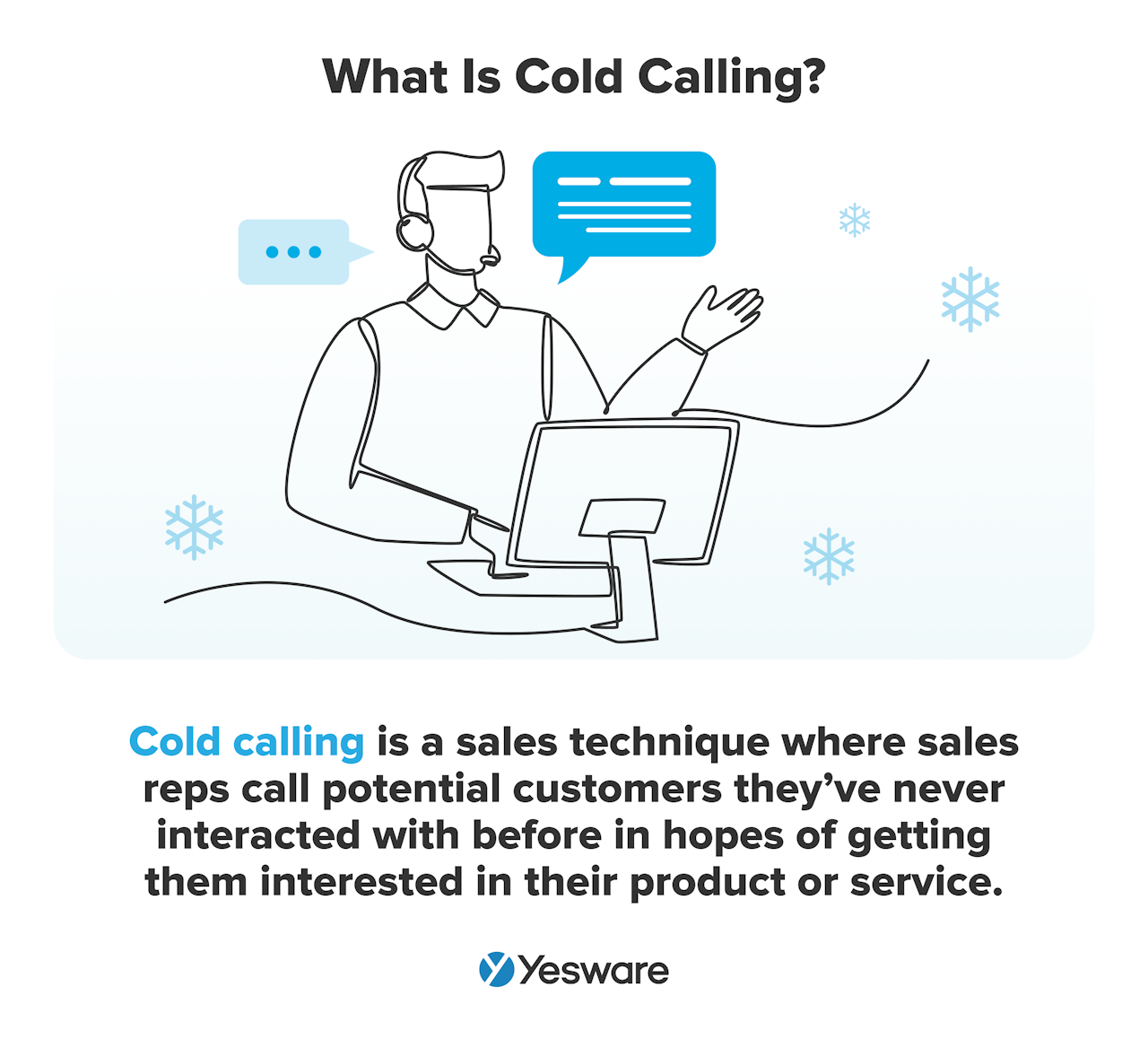
Cold calling is a sales technique where sales reps call potential customers they’ve never interacted with before in hopes of getting them interested in their product or service.
These calls are unsolicited, and no prior contact has been made between the recipient and the salesperson. It’s similar in many ways to cold emailing, but you’re contacting your prospects by telephone.
While the idea is simple, cold calling is an enormous challenge to execute successfully.
It’s incredibly difficult to successfully pitch someone on your services that you’ve just called out of the blue. And doing it consistently is even harder.
Does Cold Calling Work?
Cold calling can be so daunting that it’s not uncommon to hear marketers say cold calling is dead.
But that couldn’t be further from the truth. In our new remote reality, cold calling is more important than ever.
According to research by the RAIN Group, 82% of decision-makers accept meetings with sales professionals who proactively reach out. And the top-performing sales pros book 52 meetings for every 100 contacts.
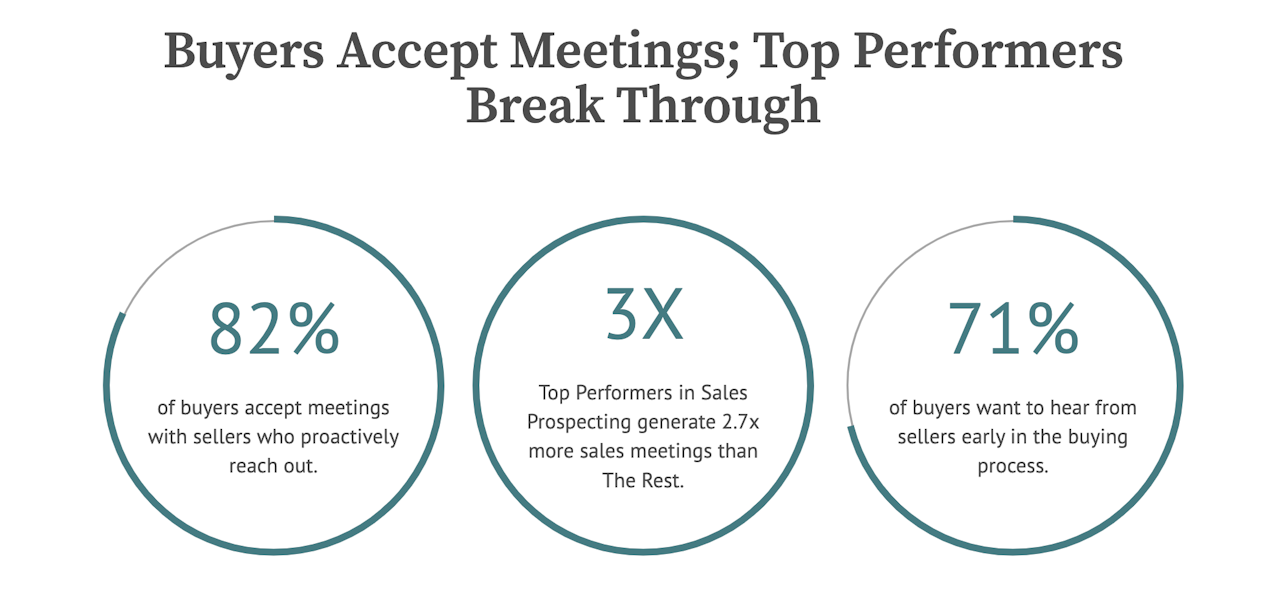
With outside sales teams grounded and work-from-home on the rise, sales teams that have adapted by implementing a strong cold calling game are thriving — and entered 2023 more successful than ever.
The Psychology of Cold Calling
To be successful, you need to understand and master the mental game of cold calling. Let’s look at some common barriers to success and how to overcome them.
Fear of Rejection
Let’s be honest. Most of us hate cold calling because of the rejection that comes with it.
Top-performing cold-call sales professionals know that rejection is an essential part of the sales process. And they know most of their peers will shy away from picking up the phone.
That’s why they embrace rejection as an opportunity to level up their performance and stand out. And you can use it to your advantage, too.
- Be persistent. With many calls going to voicemail, it can be hard to reach prospects. The most successful cold call sales professionals reach out again and again until they make contact — often six times or more.
- Practice handling objections. The more cold calls you make, the better you’ll get at turning a no into a yes. Run practice calls with another member of your sales team. Have them throw sales objections at you, and try to keep the conversation going and get to a yes.
- Use rejection as motivation. It’s completely normal to feel defeated when you’ve finally gotten a prospect on the phone, only to get shut down. Let rejections motivate you to keep making calls.
44% of sales reps give up after the first no — and you don’t want to be among them. Cold calling is a numbers game, and if you keep calling prospects consistently, you’ll make the sale.
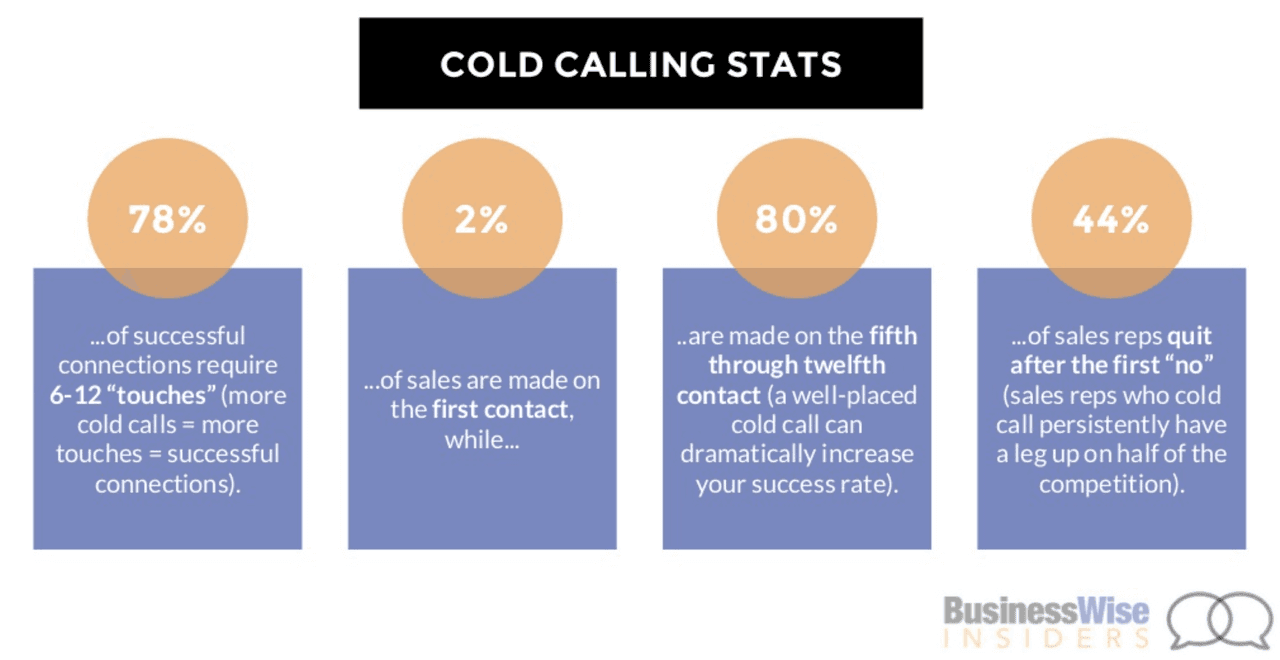
Fear of the Unknown
As salespeople, fear of rejection can prevent us from even picking up the phone — much less getting a yes.
But your prospect also has fears that can prevent you from making the sale. And the worst by far is fear of the unknown.
Look at things from your prospect’s point of view. Even if you have a killer product that’s delivering amazing results, they don’t know that. They’ve never heard of you before. They may not know your company. And listening to a sales pitch may not be worth their time.
That’s why straight-up cold calling has a low success rate. And it’s why you need a different strategy: warm calling. 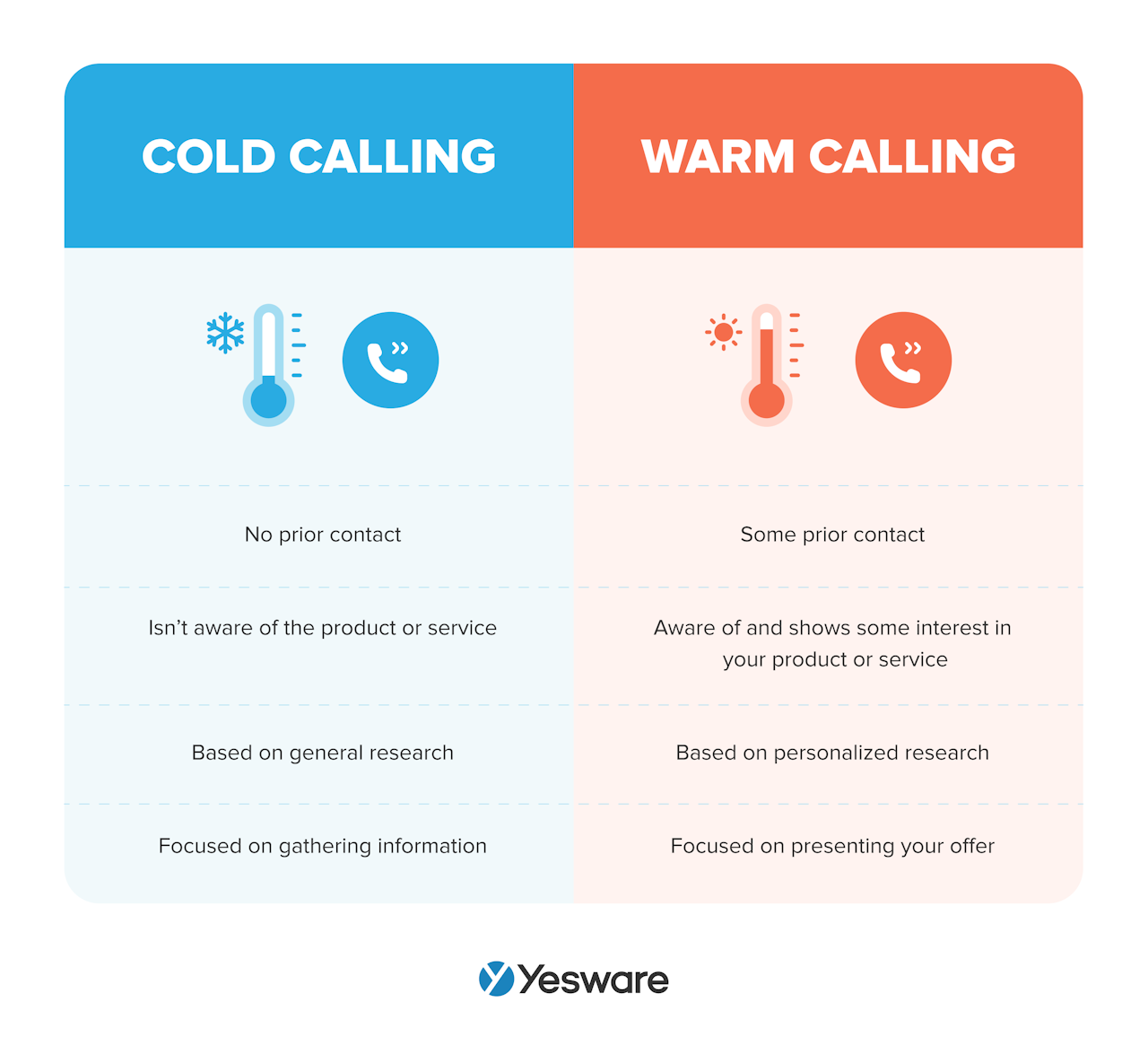 Reaching out to warm leads who have previously established contact with your business is far more successful, generating success rates of up to 40%.
Reaching out to warm leads who have previously established contact with your business is far more successful, generating success rates of up to 40%.
Warm calling will dramatically elevate your outreach, replacing awkward introductions with smooth sales pitches your prospects will welcome. It’s an essential part of a strong sales call strategy.
How to Make a Cold Call
There are a few steps needed before you pick up the phone. Here’s our six-step process to successfully executing cold calls.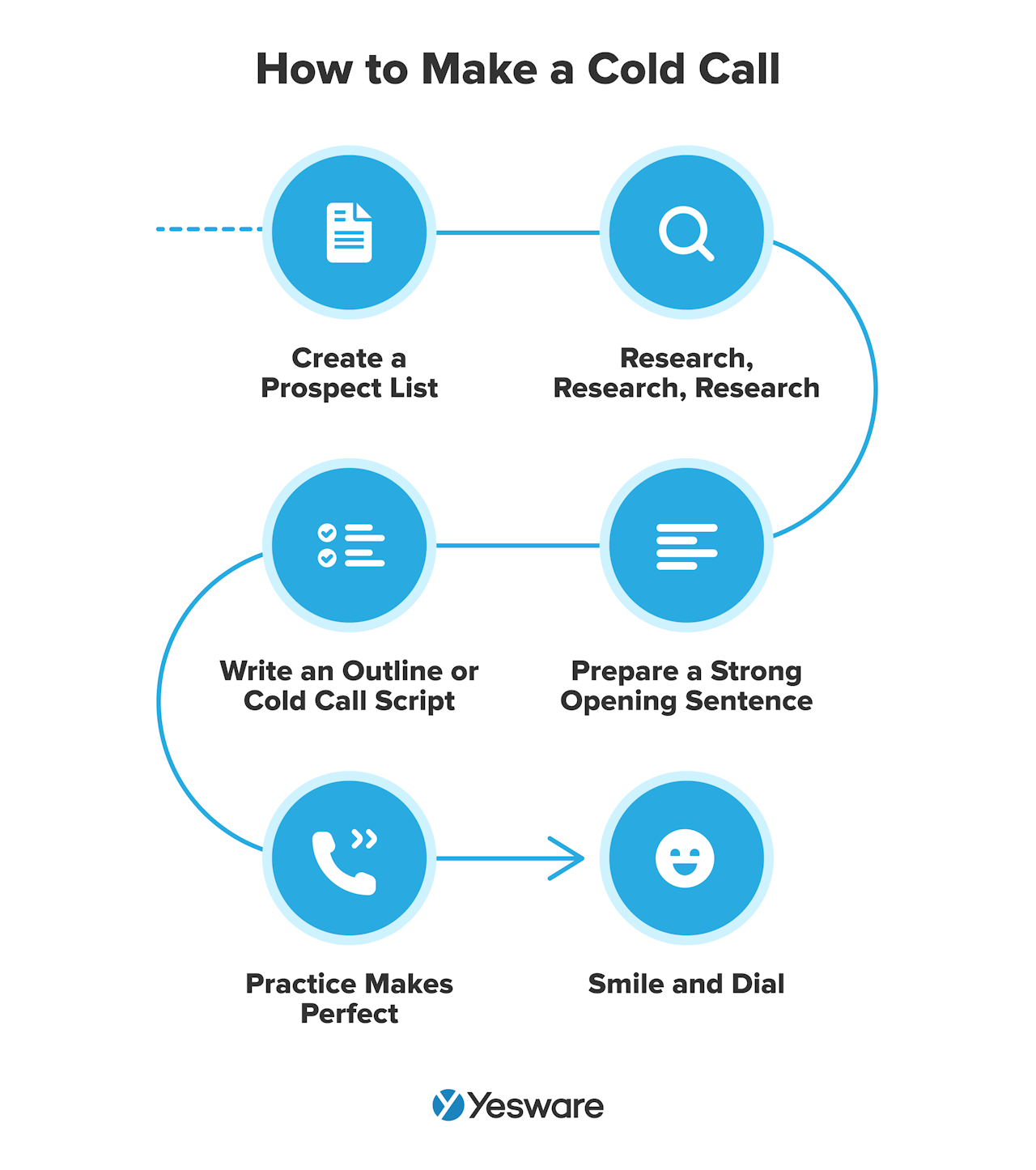
1. Create a Targeted Prospect List
Before you begin building your targeted prospect list, it’s important that you have a clearly defined ICP and buyer persona that helps you identify who your best prospects are. 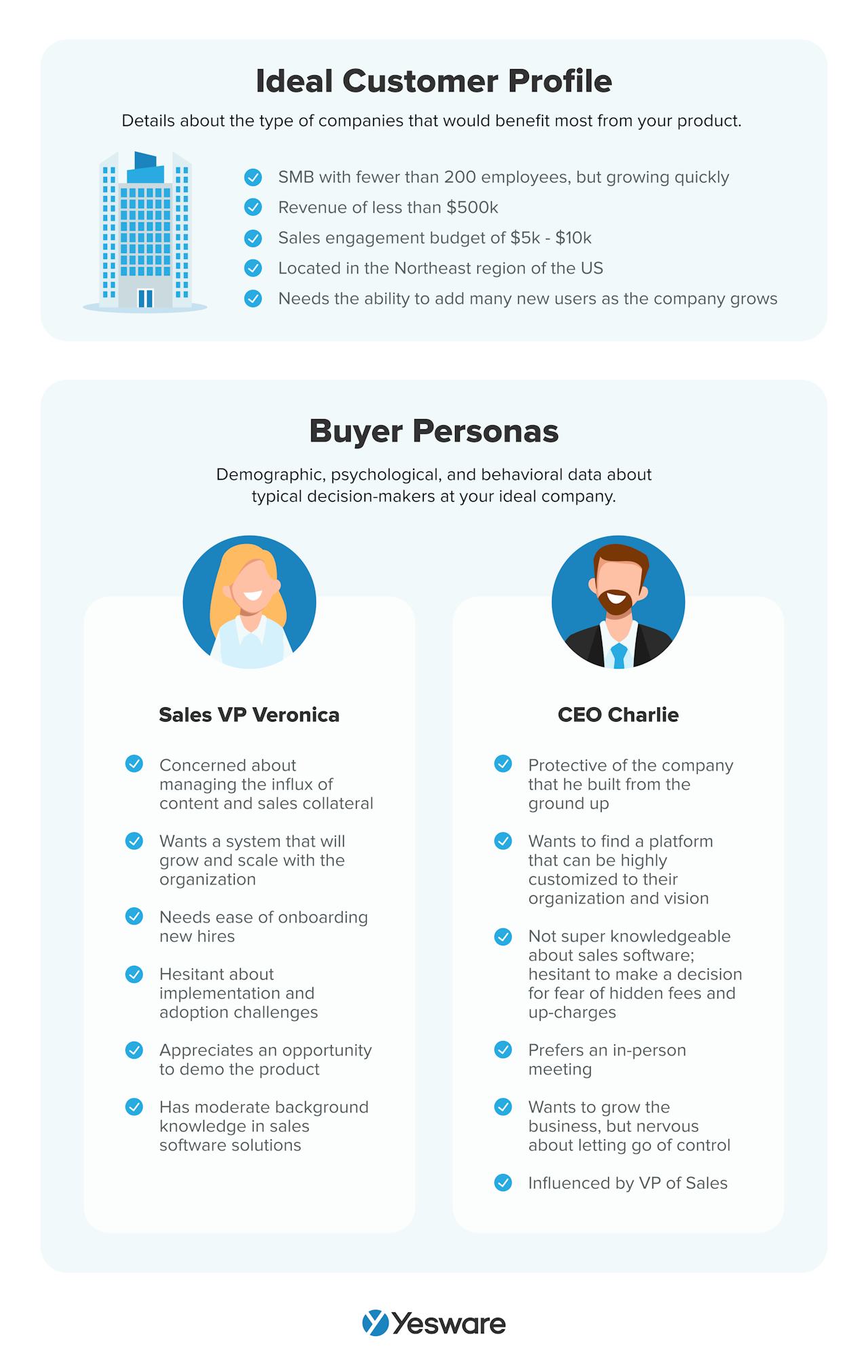 Common company traits to look for:
Common company traits to look for:
- Industry
- Headcount
- Annual revenue
Common buyer traits to look for:
- Job title
- Job responsibilities
- Team structure
Tip: When creating your prospect lists, there are various tools out there that can help you find the right contact information.
For example, Yesware’s Prospector tool gives you access to a dataset of 100+ million business profiles where you can find verified work phone numbers, email addresses, and social profiles.
The tool allows you to pinpoint the right leads with advanced search filters, including name, job title, seniority, location, company name, company size, industry, etc.
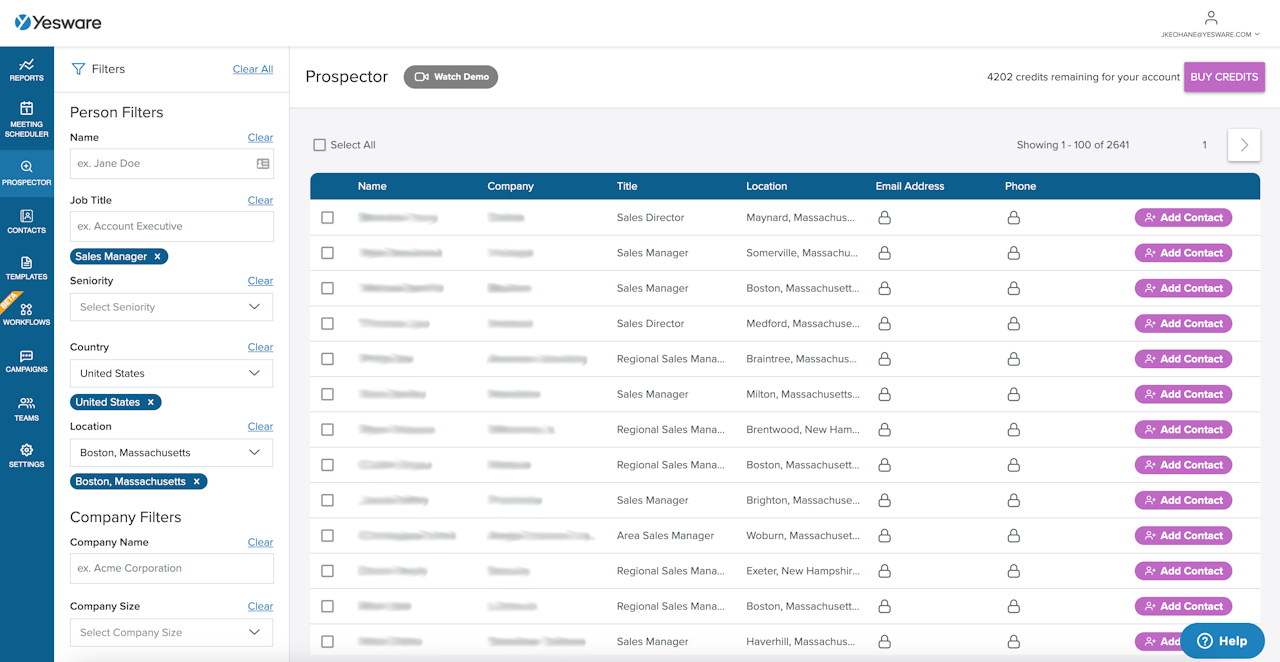
Interested in trying it out? Try Yesware for free.
2. Research, Research, Research
We’ll keep it simple: never ever ever get on a call with a prospect you haven’t researched ahead of time.
Researching a prospect enables you to learn details about their current business needs that can enable you to tailor the call to their priorities and hold their attention. And you can also pick up personal details, like how much they love surfing or that they’re huge Red Sox fans, that can enable you to make a personal connection more easily.
Check their LinkedIn, company site, your CRM (for possible past engagement), social media, etc.
Here’s a pre-call planning checklist designed from our discovery call formula to help you while prospecting:
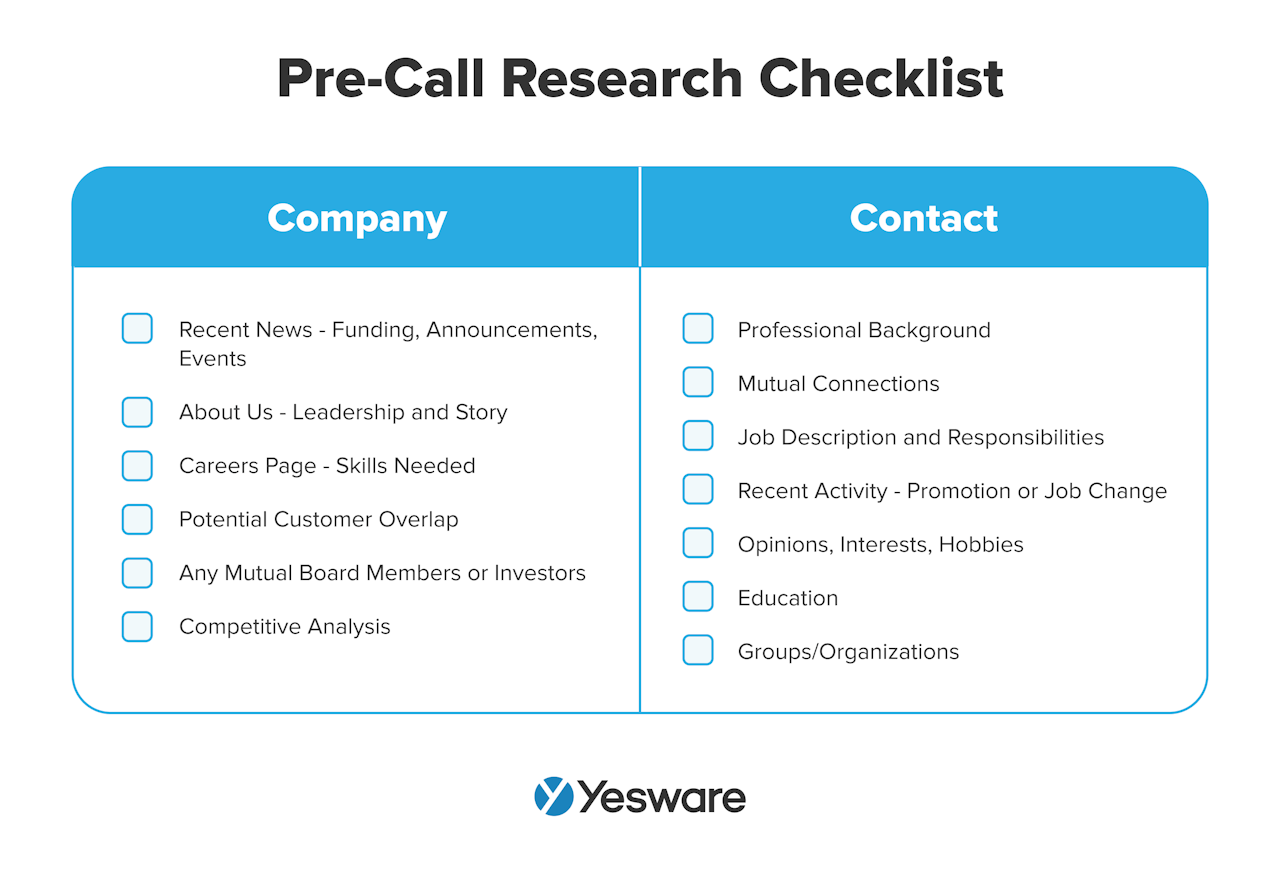 Thorough research will also ensure you connect with the decision-maker in the organization you’re reaching out to.
Thorough research will also ensure you connect with the decision-maker in the organization you’re reaching out to.
Remember, you might need to talk your way through a gatekeeper, such as an executive assistant, to reach your prospect. Take the time to confirm that you’re speaking with the appropriate contact — and if you’re not, politely ask if they’ll connect you.
3. Prepare a Strong Opening Sentence
You’ve got your caller on the line, now the challenge is to hold their attention.
You have roughly ten seconds to prove that you’re worth talking to before you lose your caller’s attention. So it’s important to differentiate yourself. Here’s how to do so.
After introducing yourself, turn the focus to your prospect by weaving in your research and personalizing the call.
For example, you can open with a compliment on a recent professional accomplishment.
Here are some strong opening sentences about your prospect, not you.
“I saw your post about _____”
“I noticed you manage _____”
“Congratulations on _____”
“Great insights on _____”
“I’m inspired by the work you’ve done on _____”
To ensure you enter each cold call with a personal statement, create a spreadsheet where you write a custom sentence for each prospect. 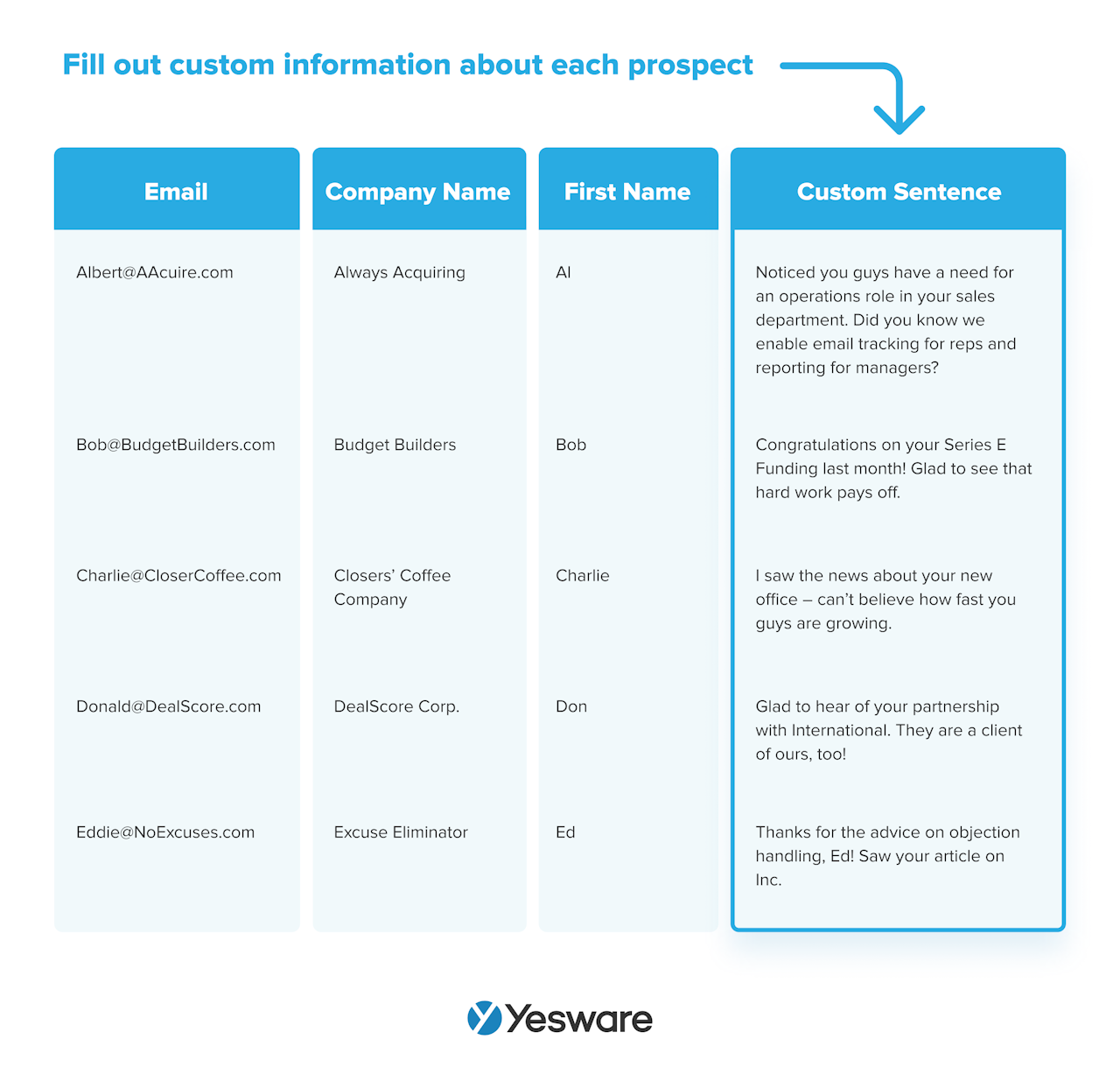 This will help to spark a connection right from the get-go and show you’ve done your research.
This will help to spark a connection right from the get-go and show you’ve done your research.
4. Write an Outline or Cold Call Script
Write up a quick (30 seconds or less) cold call script that you can reference on the phone. The idea isn’t to read from this verbatim but to use it as a guide to help you communicate your message clearly and confidently.
In your cold call script, you should effectively answer these questions:
- Who are you?
- Why are you calling me?
- How do I actually benefit?
- What are you asking for?
It’s also important to organize your cold call script:
1. Introduction (your name + company)
2. Connecting statement / Reason for calling
3. Qualifying
4. Ask
Here’s a cold call example backed with this type of script:
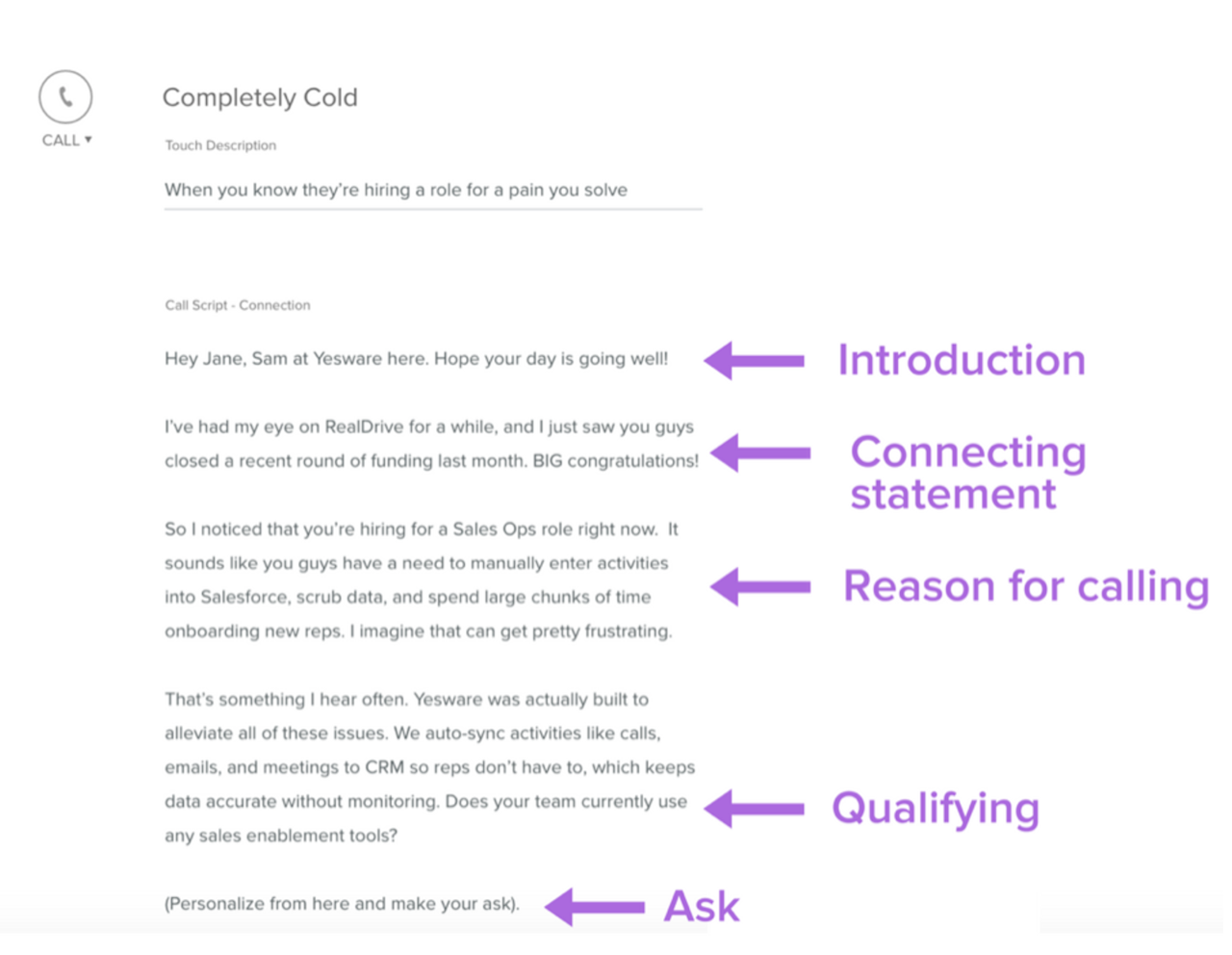
Cold Calling Script Template
To help you get started, here’s a generic cold calling script template.
The following template will suit the needs of just about any basic, straightforward cold call script.
Hi [PROSPECT NAME], this is [YOUR NAME] at [YOUR COMPANY]. Do you have a quick minute?
[Prospect (hopefully) agrees.]
Great! I’m [YOUR ROLE] at [YOUR COMPANY] and we specialize in [VALUE PROPOSITION #1], [VALUE PROPOSITION #2], and [VALUE PROPOSITION #3] for companies with [DEMOGRAPHIC #1] and [DEMOGRAPHIC #2] that [PAIN POINT/CHALLENGE]. Does that sound like you?
[Prospect agrees.]
Do you mind if I ask three quick questions about [PROSPECT’S COMPANY]? It will take less than a minute to see if we’re a good fit.
[Ask three well-researched questions that are relevant to the benefits your solution will provide.]
Thanks so much for all of that information. It sounds like [PRODUCT] could be a good fit for your needs. I’d love to set up a time to give you a quick demo — it will just take 20 minutes. How about [DATE AND TIME]?
5. Practice Makes Perfect
Never go into a cold call completely, well, cold.
Simply rehearsing what you’re going to say builds confidence which leads to better performance. Try practicing before dialing.
The more confident you become, the easier cold calling will be.
6. Smile and Dial
When you go to pick up the phone, hold a smile for at least twenty seconds, no matter where you’re working.
While it may seem silly at first, research suggests that wearing a smile – genuine or not – brings certain benefits that can help reluctant cold callers, such as:
- Lowers your heart rate
- Reduces stress
- Builds rapport
Also, smiling affects how we speak. Listeners on the other line can pick up on your facial expressions and even identify the type of smile based on sound alone. When they hear you smile, science tells us that it’s only a matter of time before the brain’s mirror neurons fire up, creating the ‘feel good’ sensation in their own mind that’s associated with smiling.
Cold Calling Tips
Below, we cover 15 of our favorite cold calling tips that have proven to improve the outcome of cold calls.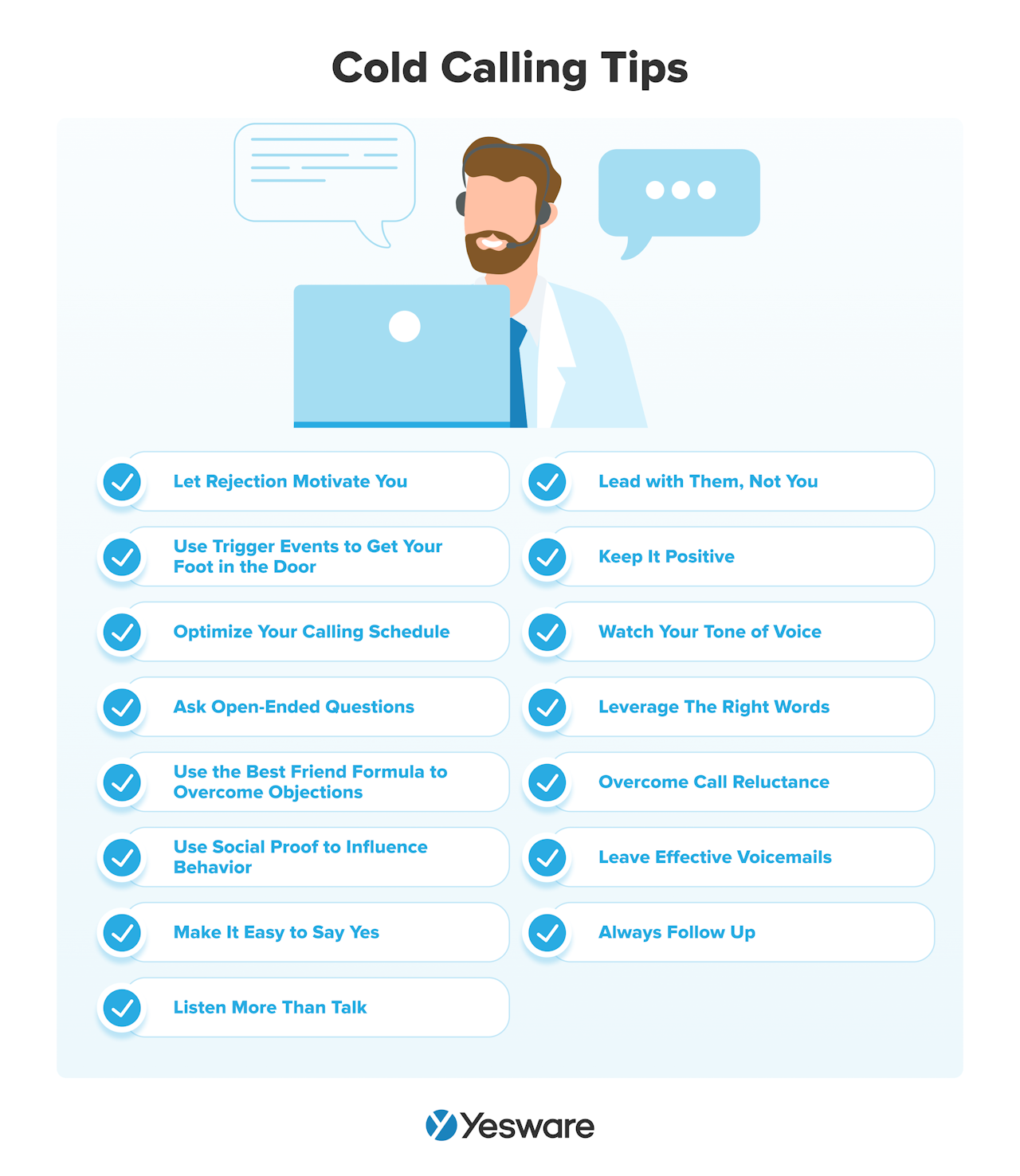
1. Let Rejection Motivate You
Rejection brings emotional pain.
We can relive and experience social pain more vividly than physical pain, so it’s easy to get discouraged by a bad call.
The best salespeople use rejection as motivation. They evaluate every call they make and ask questions like:
- Were you focused on a specific sales goal?
- Were you confident?
- Did you build real rapport with the prospect?
Review the most important elements after every call you make. What went well? Where could you have improved? Make a habit of evaluating your calls, and you’ll quickly improve.
The best sales reps keep a positive attitude, pick up the phone, and continue learning from their mistakes.
2. Use Trigger Events to Get Your Foot in the Door
If you contact someone right after they close a contract with your competitor, chances are they won’t bite.
But if you know exactly when they enter the market for a new vendor and reach out before they start the search, your seemingly serendipitous call may be received with much more interest.
The good news is that the secret to perfect timing isn’t really a secret. You can pick up on these opportune moments — known as sales trigger events — by keeping tabs on publicly available information that surfaces every day across a variety of online channels.
Use services like Google Alerts to keep an eye out for things like:
- New executive hires → A new member of the C-suite wants to prove his or her value and may be more open to new ideas than already entrenched business leaders.
- Winning large contracts/large customer announcements → Drop a line to say congratulations.
- Company expansions → A new location or geographic change could be a primary upsell or introduction opportunity.
- Mergers & Acquisitions → If one party is already a customer, this could be a golden opportunity to get your foot in the door and bring in add-on revenue.
- Funding → Your prospect is up to eight times more likely to buy from you after they experience an event where they can afford to change.
- Behavioral indicators → Is your prospect looking at an email you sent? Go get ‘em — you’re more likely to grab their attention while you already have it.
3. Optimize Your Calling Schedule
If you want to start getting wins from cold calling fast, the simplest way is to stick to a consistent calling schedule.
But how many phone calls do you need to make? And when should you make them?
Don’t just blindly make calls and hope for the best. If you take that approach, you’ll soon see week after week of disappointing results.
Instead, work backward from your sales goals — and reverse-engineer a calling schedule that can help you hit them.
Using our cold call worksheet, you can calculate exactly how many calls you need to make to hit your sales targets — based on your monthly quota, average deal size, connect rate, and conversion rate.
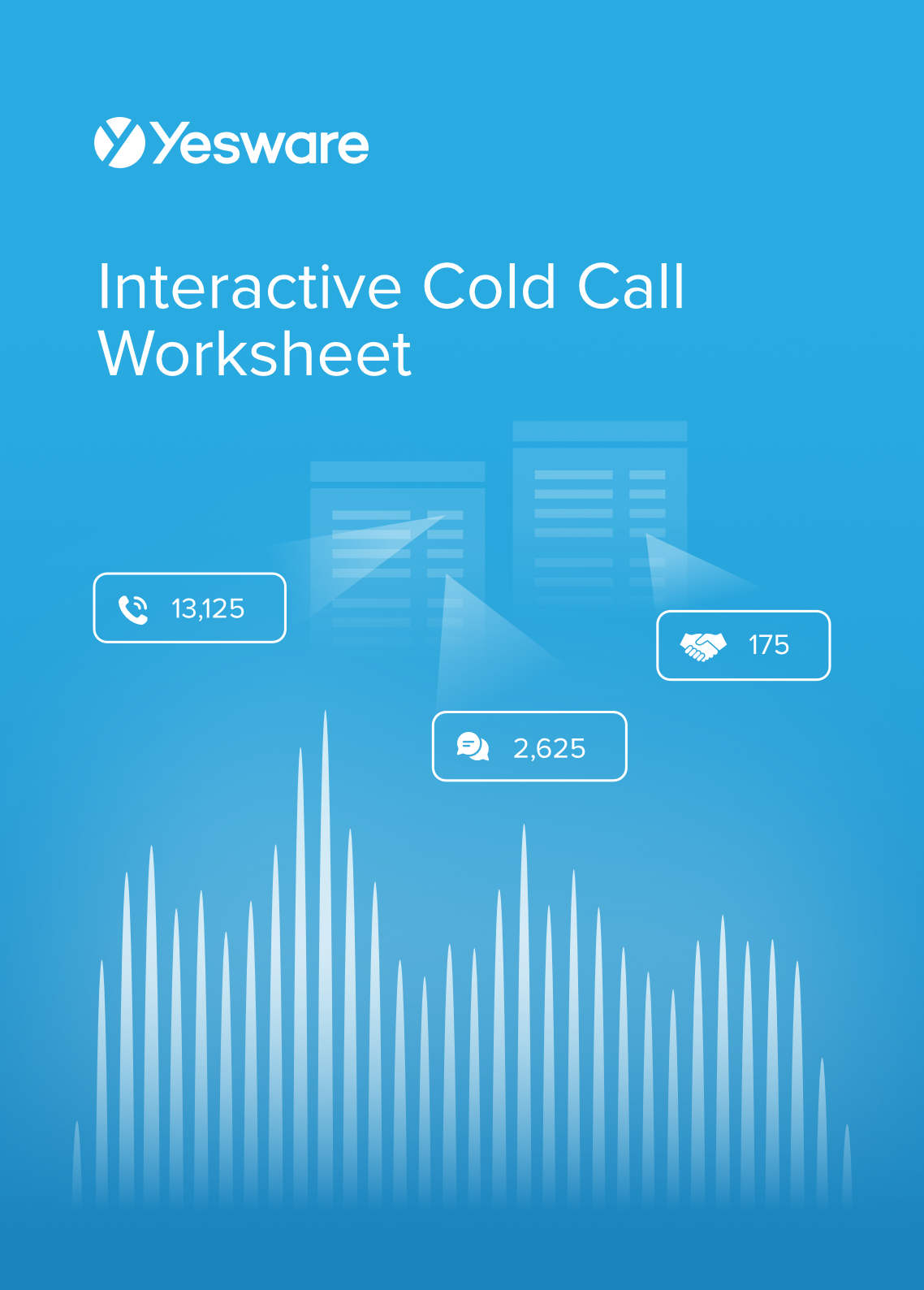 Interactive Cold Call WorksheetFully customizable worksheet that pinpoints roughly how many cold calls you need to make each day and in total for the month in order to hit your quota.
Interactive Cold Call WorksheetFully customizable worksheet that pinpoints roughly how many cold calls you need to make each day and in total for the month in order to hit your quota.
While there’s no such thing as a “best time” to call, there are some general guidelines. Various studies have found that response rates tend to be best early in the morning or late in the afternoon.
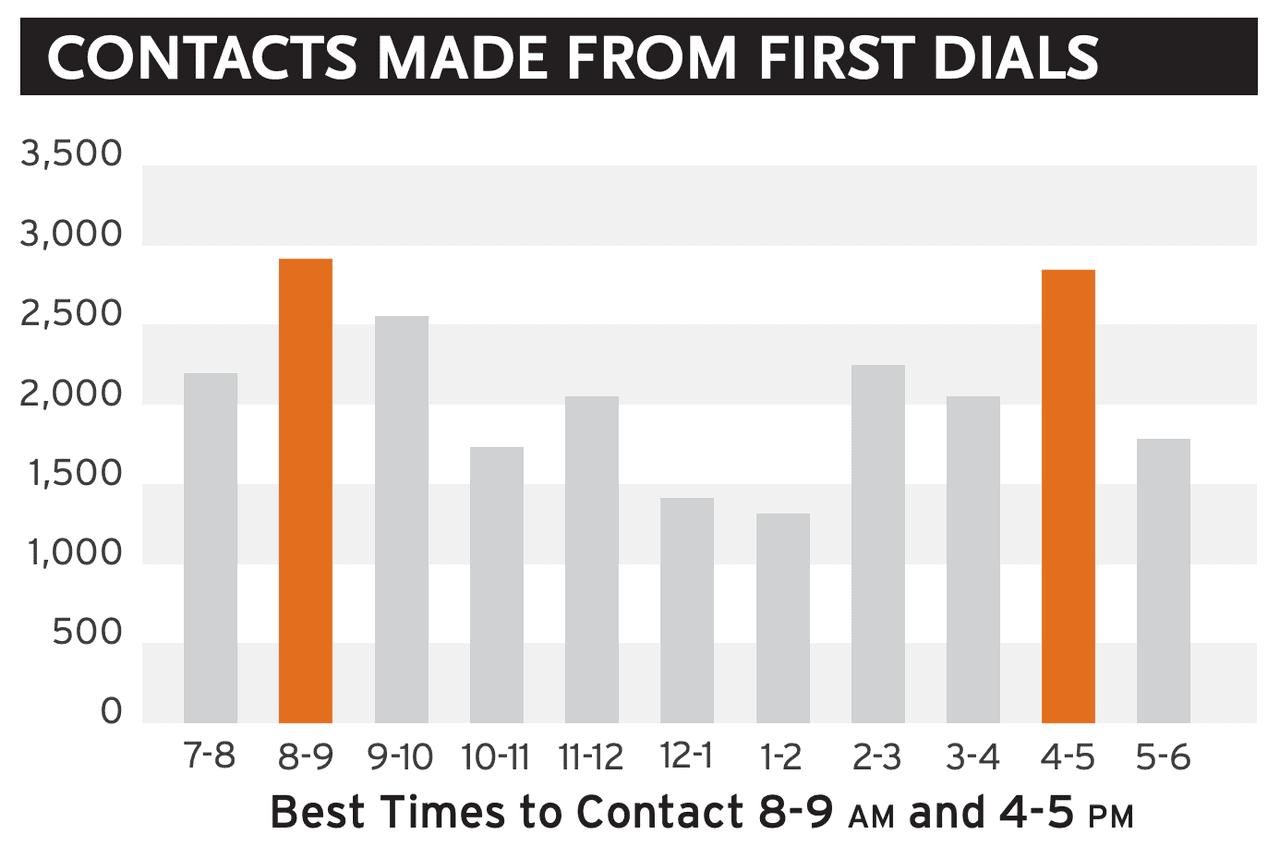
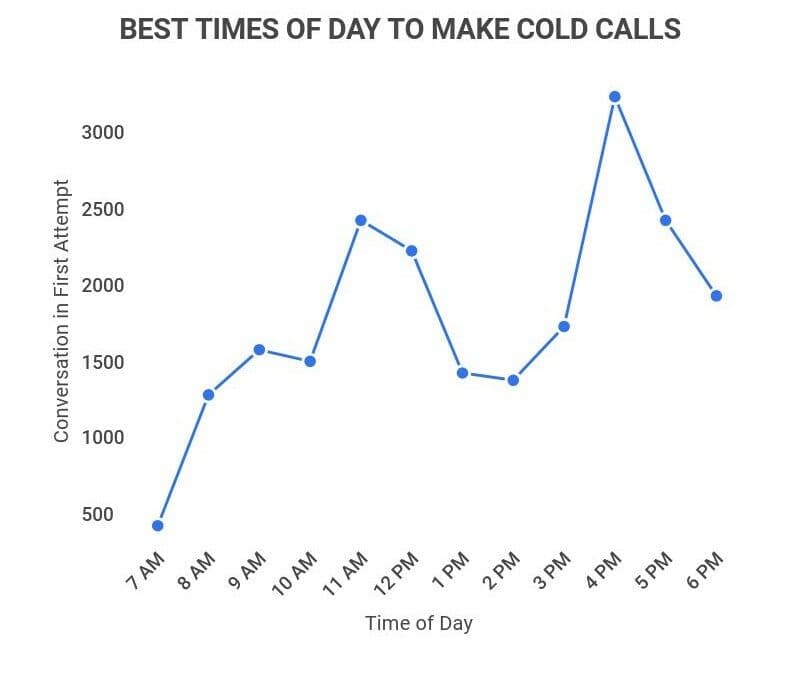
We also conducted a study on the best time to make cold calls ourselves; we analyzed 25,000 sales calls and found that the majority of calls lasting over five minutes occur between 3:00-5:00 pm on Tuesdays or Thursdays.
This supports the above claims that late in the afternoon/towards the end of the workday is a good time to make your cold calls.
You can use studies like these to help you test specific times and days yourself. The only way to know what works best is to take a data-driven approach.
Using an Excel or Google Sheets spreadsheet, keep track of how many responses you get at different times of the day. Determining when you’re getting the best response rates will enable you to make calls at the times when you’ll get the best results.
Pro Tip: Calling prospects right after they’ve opened your email can result in a 32% higher connect rate. This tool tells you when they open — in real-time.
4. Ask Open-Ended Questions
For the most part, top sales pros shut up and listen. But there’s one exception: you should be ready to ask great open-ended sales questions that get your prospects talking.
Asking open-ended questions is one of the most popular cold calling techniques in the book, and for good reason.
You want to avoid all questions that can be answered with a “yes” or a “no.” Your goal is to ask open-ended questions that require more in-depth answers so that you can grasp as much information as possible. Then, then use that information to guide the conversation toward how their business could be transformed with your solution. 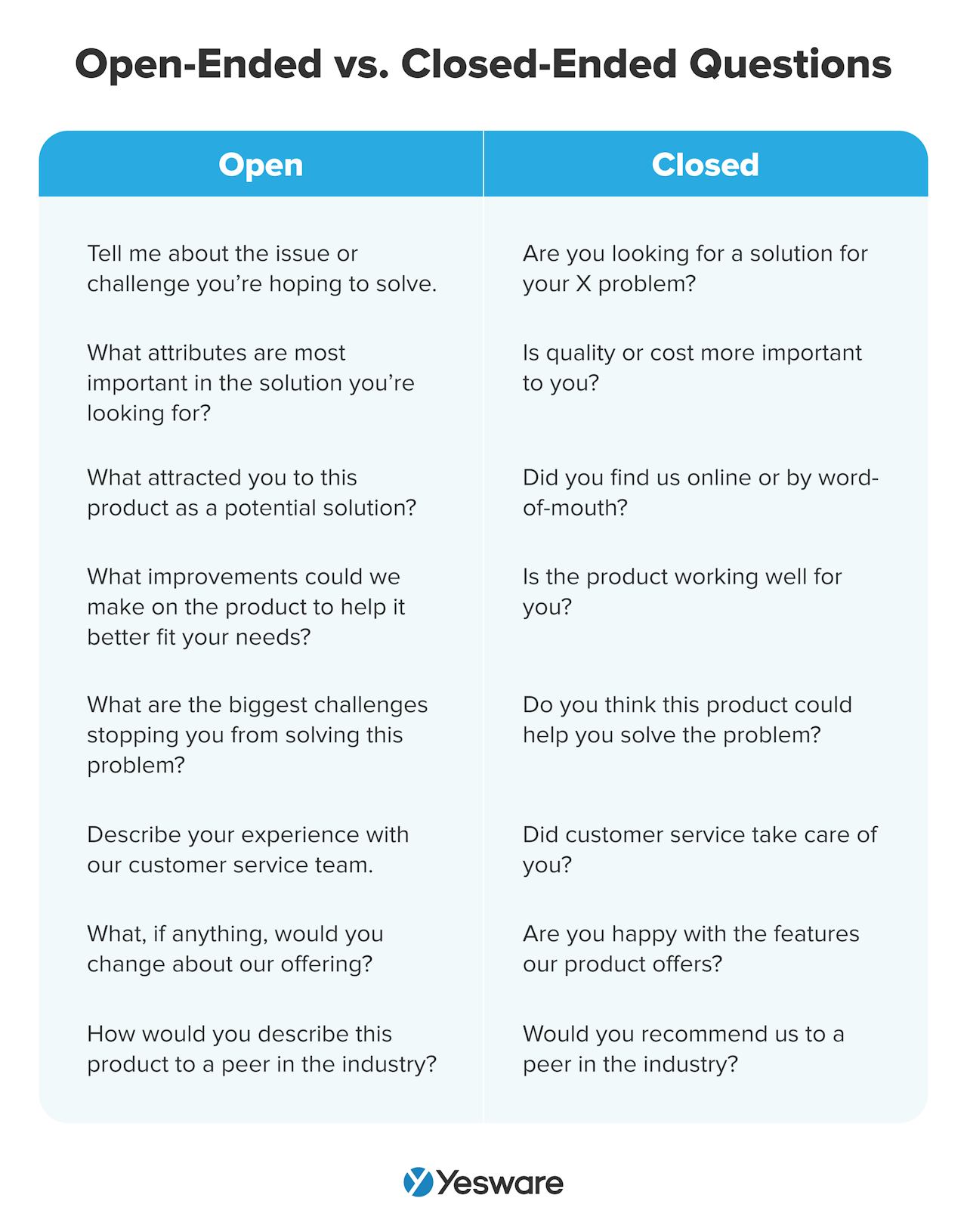 As your prospects share information, one of the most powerful strategies for gaining their trust is repetition.
As your prospects share information, one of the most powerful strategies for gaining their trust is repetition.
By simply repeating back key points that your prospects have made, you demonstrate that you were really listening to them and give them an opportunity to clarify or extend what they’ve already shared.
And you continue to build rapport, smoothing the path for future sales conversations.
5. Use The Best Friend Formula to Overcome Objections
Coined by Yesware’s VP of Sales, Ian Adams, this three-part formula for overcoming sales objections tells you exactly how to respond to “Could you just email me your information?”
While it may be tempting to agree to follow up over email (and hop off the call), there’s a better way to give your prospect the information they need to make an informed decision and take a meeting. One that doesn’t involve your message going into a black hole.
This three-part formula helps overcome sales objections by establishing harmony – it reassures people that you’re on their side, like a best friend.
Let’s look at a real-world use case for the sales objection “Email me your information.” Don’t fall for the brush-off. Instead, treat the person on the other end of the line like they’re your friend you can relate to and that you genuinely want to help.
Successful Cold Call Example
Here’s how Ian Adams used this formula to successfully turn a cold shoulder into a booked meeting:
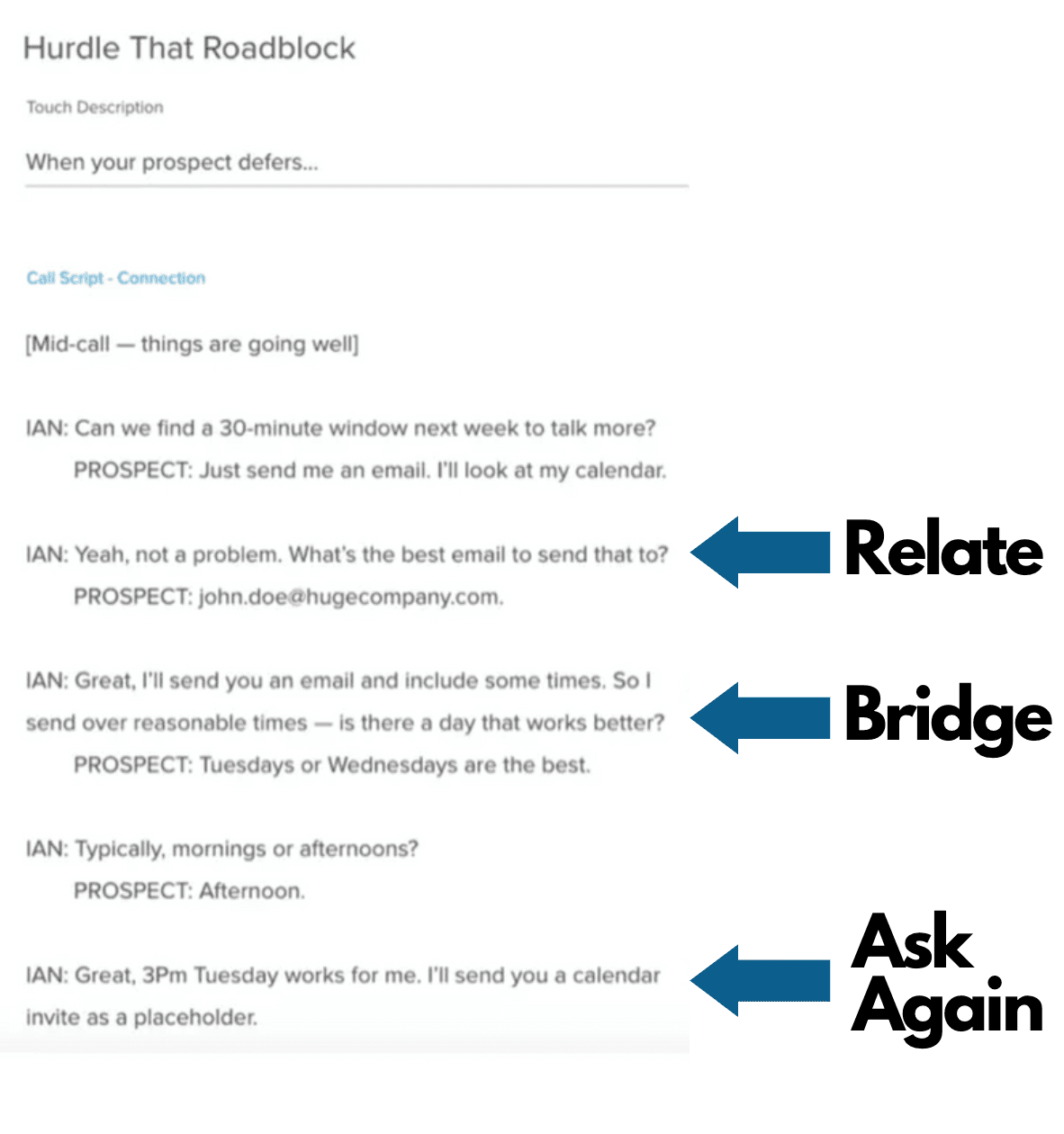
6. Use Social Proof to Influence Behavior
We are easily influenced by other people’s behaviors.
Social proof plays a major role in selling because it shows the prospect that your solution has helped other people with similar pain points.
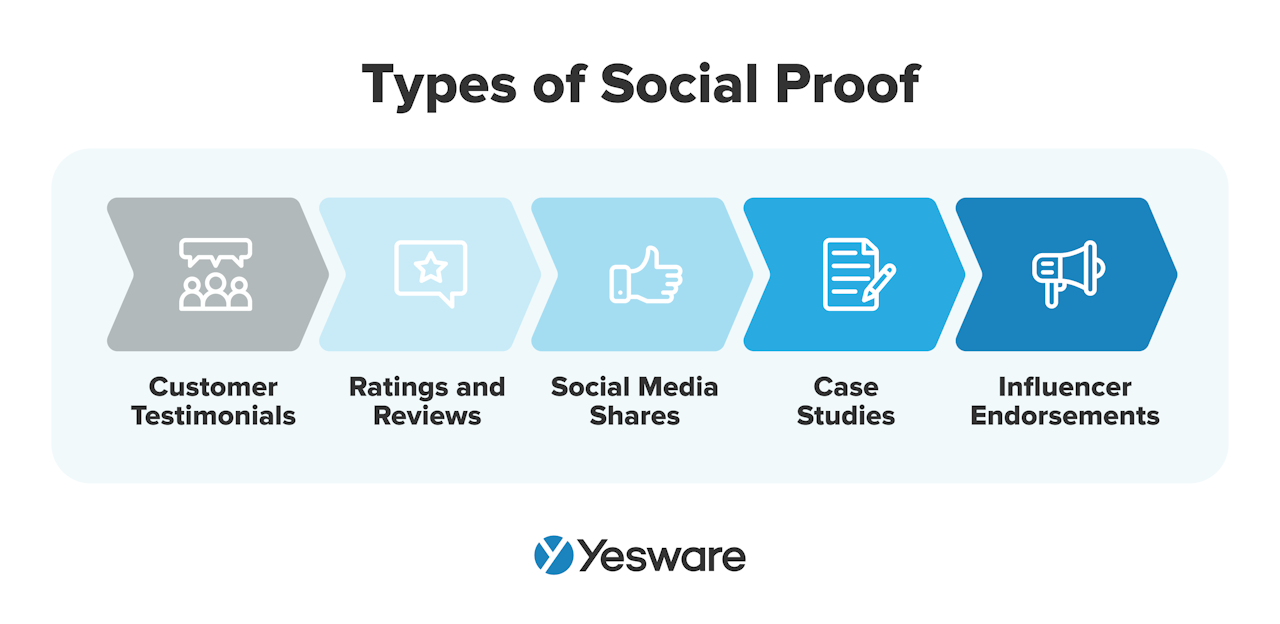
Try telling a sales story of a company similar to the prospect’s company that experienced the same pain points and solved these problems by leveraging your product or service.
Or, it can be as simple as mentioning a few recognizable companies that use your product or service.
Social proof works because when consumers are uncertain about a purchase, they look to the behaviors and actions of others to help determine their own. Especially successful businesses because hey, they must be doing something right.
7. Make It Easy To Say Yes
When you cold call a prospect, you should always have a specific objective in mind — an action you want your prospect to agree to.
And every step of the conversation should move your prospect toward taking that action.
On a cold call, you’re not trying to make the sale. You are trying to start a conversation with your prospect about how your solution can solve their business need.
To be successful, you simply need to continue the conversation. That could look like:
- Sending over a resource after the call, like a video or an information packet
- Scheduling a follow-up call
- Setting up a product demo
Just like with earlier phases of the call, it’s important to listen here. Having a conversation and getting your prospect’s feedback on the best next steps can make it much easier to move toward a deal. Sales professionals with the shortest sales cycle spend 53% more time in their first meeting discussing the next steps in the process.
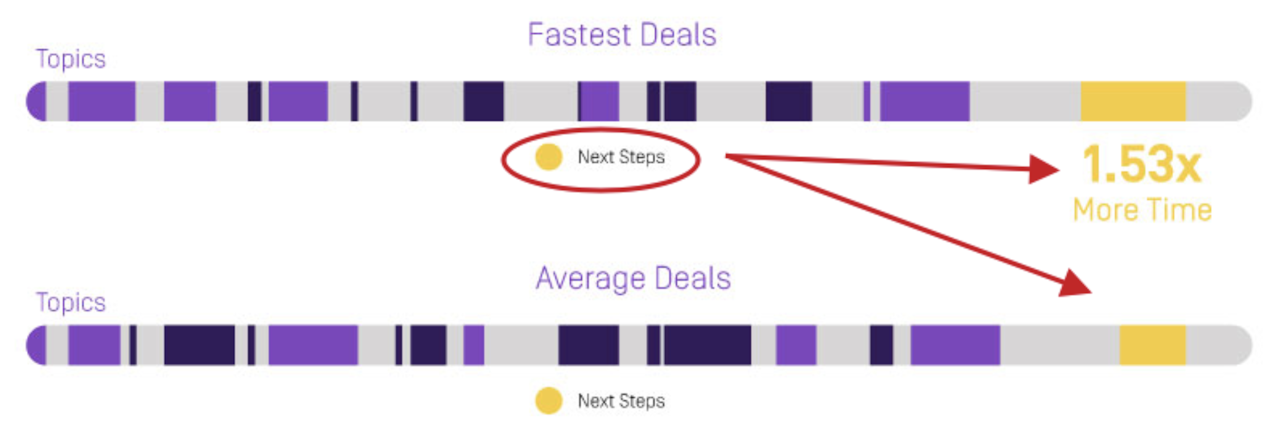
If your ask isn’t aligned with your prospect’s needs and priorities, you’re going to hear no — a lot. Be realistic. Target potential customers who are a good fit for your offer.
8. Listen More Than Talk
It’s the most fundamental rule of marketing. Customers don’t care about you. They only care about themselves.
In fact, people spend 60 percent of their time in conversations talking about themselves.
That’s where your prospects’ focus is. And that’s where your focus should be, too.
In fact, top-performing sales reps are the only ones who listen more than they talk:
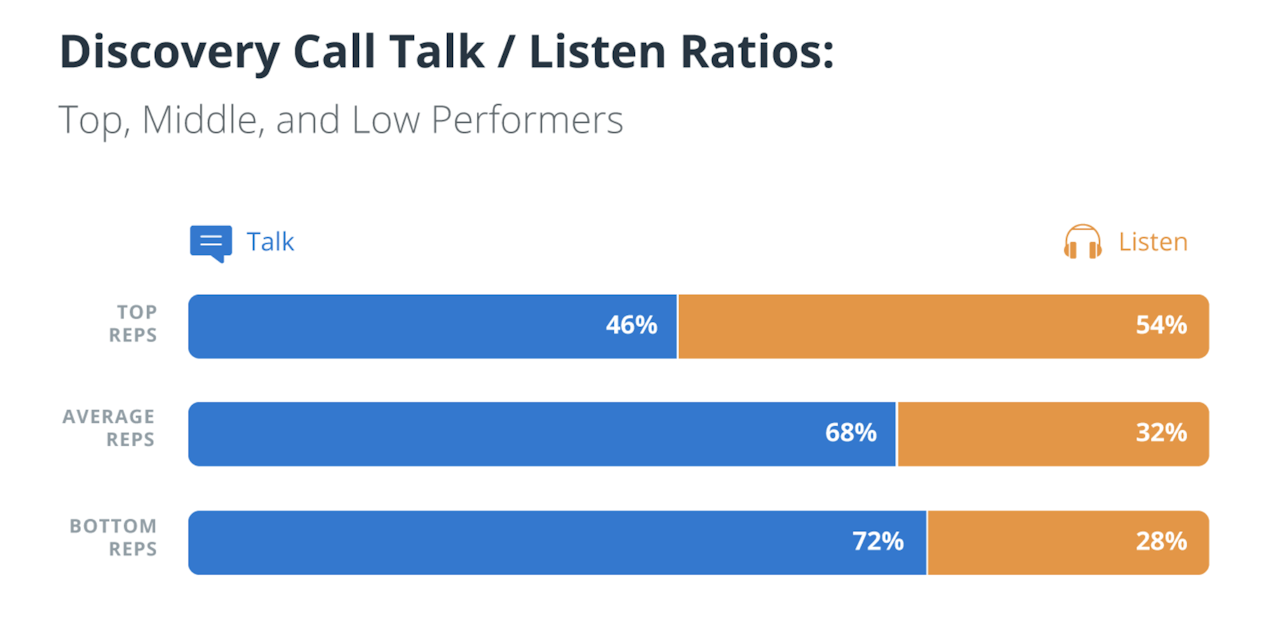
On a cold call, you will start feeling the urge to start telling your prospect all about your amazing product and how it will change their life.
That’s normal. But you must resist. Notice when you’re feeling the urge to speak, and instead, keep listening and asking probing questions to find out more about your prospect’s needs.
By listening, you make your prospect feel valued and understood, and you gain valuable insights that can help you to serve them better. It’s an incredibly simple tactic — yet it’s shocking how few salespeople do it well.
9. Lead with Them, Not You
The most important thing to do in cold calls is to build rapport with your prospect. It’s critical to be approachable and engaging and connect with the other person on a human level.
One of the best ways you can do that is to lead the conversation with a question about the prospect.
In an analysis of over 90,000 cold calls, Gong found that callers who started out with a friendly opener got response rates more than six times better than the average caller.
The top-performing opening line was super simple. “How have you been?”
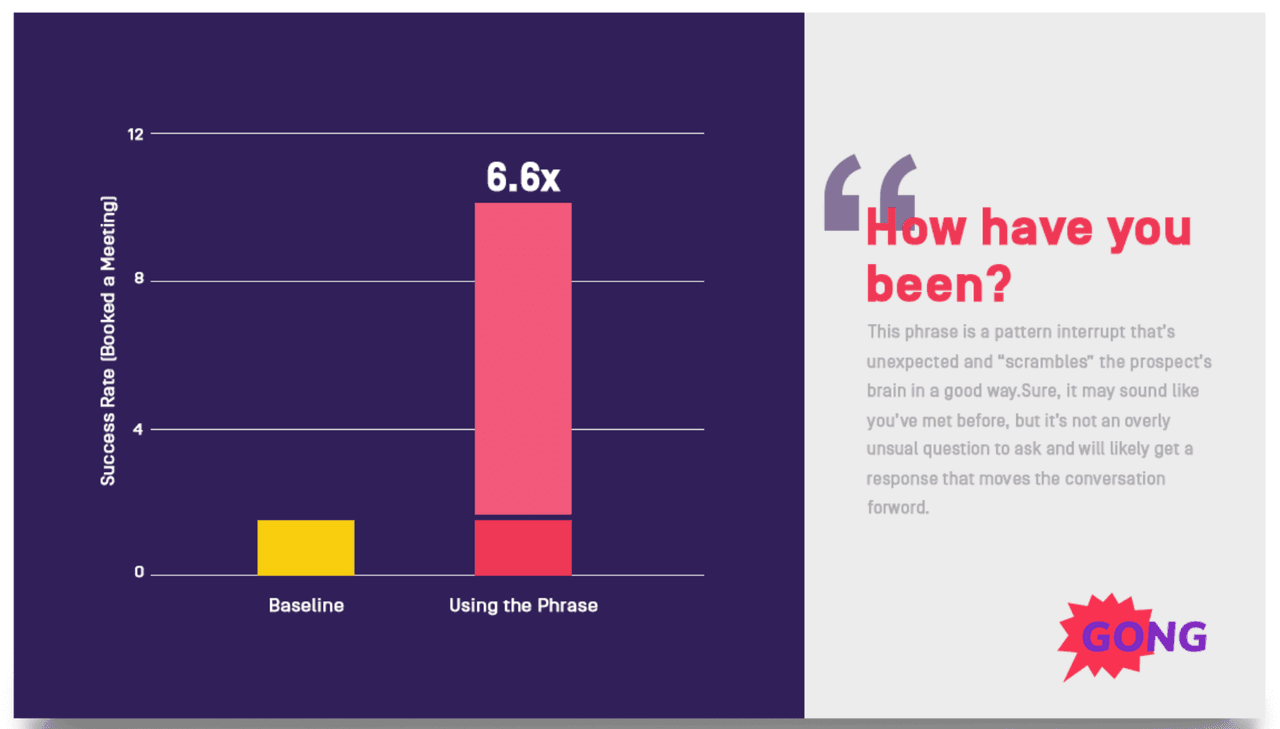
It can be as easy as that. Showing your prospect that you care about them can go a long way.
10. Keep It Positive
Positive thinking is scientifically proven to build your skills, boost your health, and improve your work.
Much like overcoming rejection, don’t let defeat (or negative thinking) get the best of you. Every mistake you make is an opportunity to learn and do a better job in the future.
11. Watch Your Tone of Voice
Research indicates that 38% of spoken communication is comprehended by the tone of voice.
This is the 7-38-55 rule which represents the elements of personal communication — 7% through spoken word, 38% through tone of voice, and 55% through body language.

But when cold calling, the prospect can’t see your body language, so tone accounts for even more.
Your tone conveys more about your emotions, point of view, and attitude toward the listener than your words do.
Even the perfect cold-call sales script will be ineffective if the sales rep doesn’t nail the tone.
This is why tonality in sales is so important.
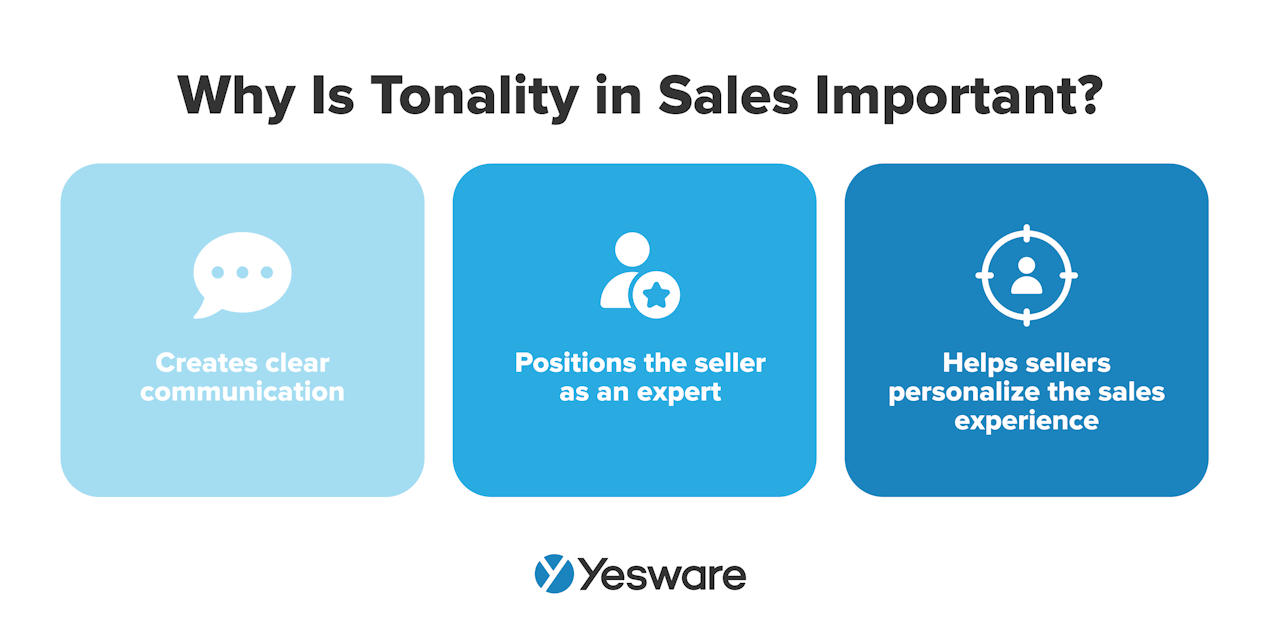
Pay attention to how you’re feeling. When you come across as positive and upbeat, you’re much more pleasant to talk to — and it’s easier for potential clients to share what’s on their minds. If you’re feeling tired or flat, try listening to some classic pump up music to get in the zone.
12. Leverage The Right Words
When you cold call a prospect, the first thing you want to know is that they are, in fact, the person you’re trying to reach. The way you verify their identity is this person’s first impression of you, so it’s critical to get this right.
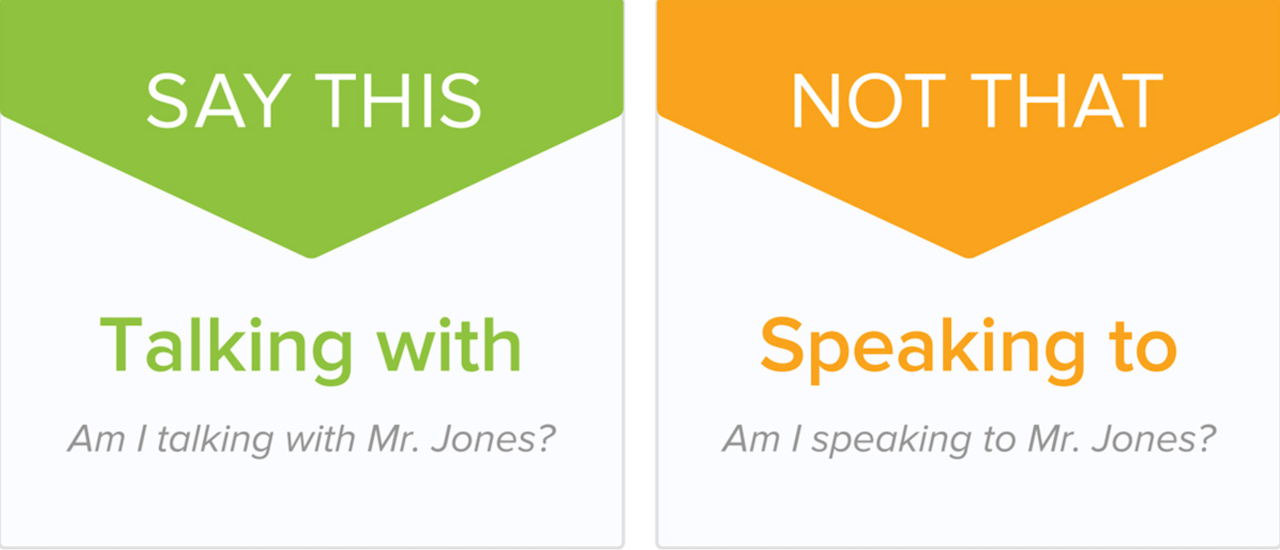
Try to use the words “Talking with” when you get someone on the line. These two words imply that you and your prospect are going to be engaging in conversation.
In contrast, “speaking to” describes a one-way action. It suggests that you are going to broadcast your message — whether they want to listen or not.
Tip: Learn more power words for your sales calls here.
13. Overcome Call Reluctance
Studies show that 80% of new salespeople fail due to call reluctance. It’s completely normal to feel jittery before a cold call, but with the right measures, you’ll be able to conquer that.
Next time you’re feeling nervous:
- Take positives where you can: Regardless of the outcome, look at every call as a learning experience. Learn from the negatives and embrace what goes right.
- Use essential oils: Pick a scent that relays fond memories. Essential oils can trick your mind into moving to a place of positive power.
- Look at a photo of a loved one: Seeing someone you love makes you feel happier, relieves pain, and makes you less susceptible to anxiety.
14. Leave Effective Voicemails
Think of it as an audio email, and keep it to 20-30 seconds. Don’t worry about a reply; just focus on continuing to nurture your prospect’s trust in you.
At the beginning of your voicemail, insert your connecting statement (after you say who’s calling), then end with a note that triggers curiosity.
Let’s look at an example.
The voicemail script below combines a trifecta of persuasion techniques:
- Social proof
- A metric that makes the value statement more compelling
- A closing statement that sparks curiosity and is scientifically proven to drive action.
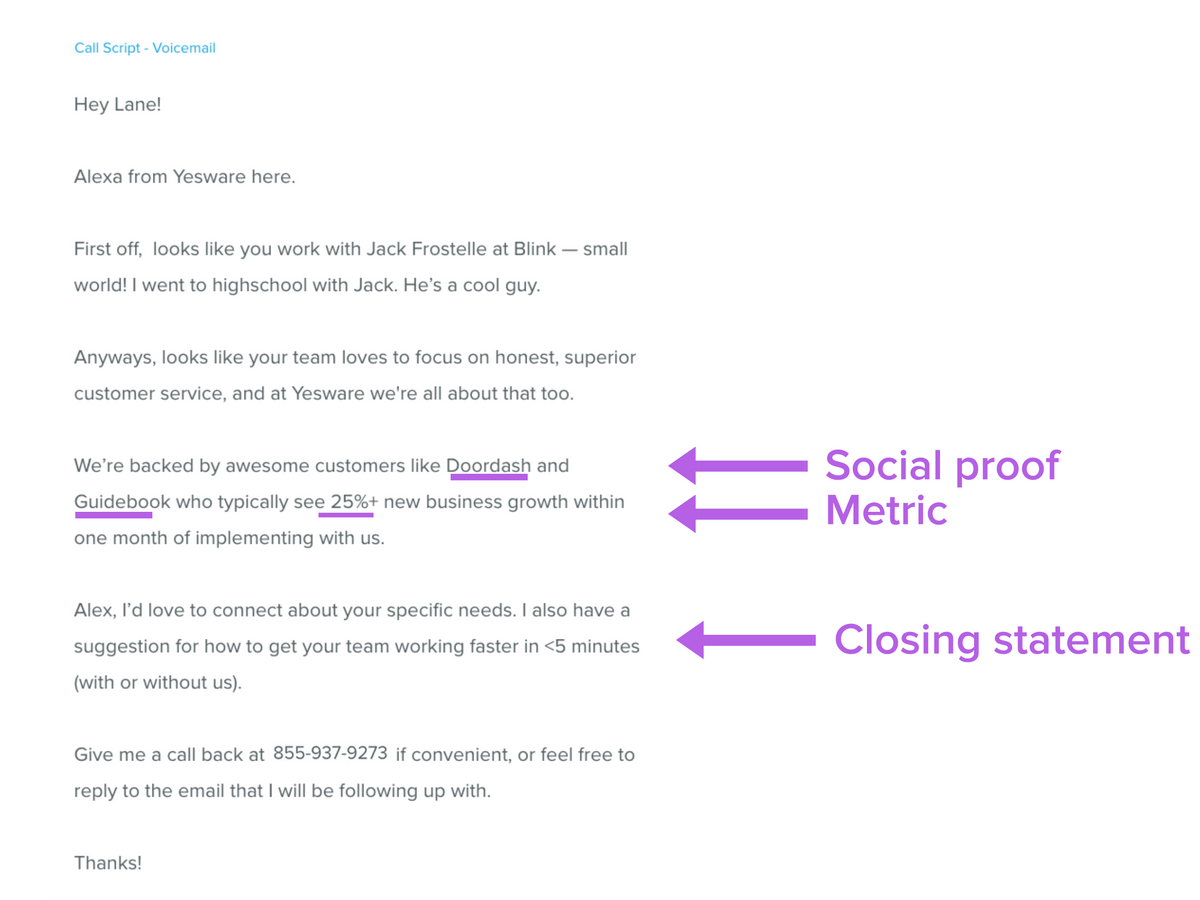
Tip: Grab 15 sales voicemail scripts here.
15. Always Follow Up
With cold calls, following up is even more critical than with other marketing channels. A well-planned cold email sequence can get open rates above 70%. But over 90% of cold calls go straight to voicemail.
Persistence is key. 50% of sales reps never follow up at all — and that means building a strong follow-up routine can help you stand out from your peers.
We’ll cover the best ways to follow up on a cold call in the next section.
How to Follow Up on Cold Calls
When following up on cold calls, take a multi-touch approach. Make follow-up calls, text your prospects, and send emails until you’re able to connect.
Follow Up By Voicemail
Since you first reached out with a cold call, it only makes sense to continue following up by phone.
It’s easy to start rambling in a voicemail, just like in a phone conversation. To avoid this, have a clear idea of what you want your prospect to take away. Your job is to let the caller know who you are, where you can be reached, and why you’re calling — all in about ten seconds.
To stay on track, have a voicemail script ready to go, just like you script your calls. For example, this simple script from Mike Brooks helps you to demonstrate you’ve done your research:
Hi [FIRST NAME], this is [CALLER’S NAME] with [COMPANY]. You and I haven’t spoken yet, but I’ve been doing some research on your company and I think you’re a great fit for [SOLUTION]. We can provide you with [BENEFITS] and I know you’ll be happy if we spend just a couple of minutes discussing how this can help you.
When you get this message, please call me back at [NUMBER]. That number again is area code [NUMBER] and ask for [CALLER’S NAME]. I look forward to speaking with you.
Follow Up By Email
With a multi-touch follow-up strategy, you’ll also want to follow up with your prospects by email. Check out our guide to get all our best follow-up email templates, and be sure to keep these basic points in mind.
- Keep it short. Especially when you’re following up on a cold call, your goal is to get a callback. Long-winded emails don’t help you reach that goal.
- Focus on the benefit. It’s tough to get decision-makers to set aside time to hop on a call, so you’ll want to highlight clear benefits your solution could provide to them.
- Make a clear ask. Be clear about what you’re asking your prospect to do. For example, with Yesware’s Meeting Scheduler, you can easily cut out the back-and-forth and allow your prospect to book a quick call at a time that works for them.
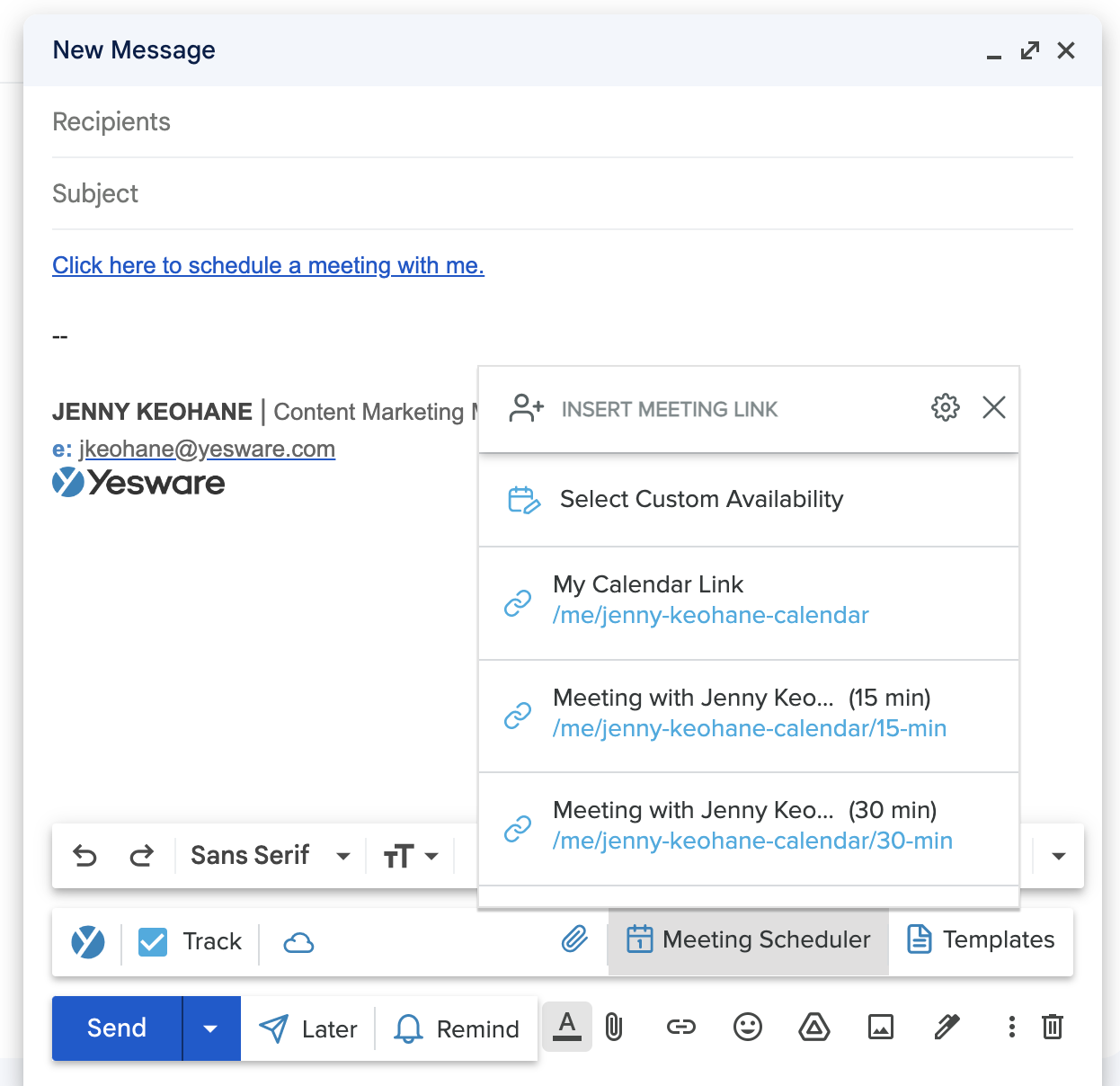
Follow Up By Text
Following up with your prospects by text is the perfect complement to your cold calling efforts. It’s quick, non-intrusive, and enables you to stay top of mind.
Particularly if your prospect is in a more conservative vertical, it’s best to get permission before texting. On the other hand, prospects in emerging, tech-friendly spaces tend to embrace texting.
Aim to be friendly while maintaining professionalism, as Aja Frost does in this example:
Hi, Jimmy. I did some digging and found the answer to your question about monthly volume. It’s not straightforward, so we should cover it on another call. Are you free tomorrow at 1 p.m.?
Common Cold Calling Mistakes to Avoid
Experienced sales pros know that making the wrong move can quickly end a call, no matter how great your plan is going in.
If too many of your calls are ending with a no — or worse yet, a hangup — take a good look at your cold calling game. You might be making one of these simple mistakes.
Interrupting
Nobody likes to be cut off mid-sentence. If you’re regularly interrupting your prospects on calls, you’re killing your chances of getting a yes.
While interrupting is terrible for your close rate, it’s a totally natural behavior.
After all, silence can be awkward — especially when we’re talking with strangers. And when there’s silence, we often reflexively jump in and start talking, even though our prospect may be in the middle of saying something.
Part of listening is being aware of your own reactions. If you feel the urge to cut in while your prospect is speaking, resist the temptation and stay focused on what they’re saying.
Rambling
Many inexperienced sales reps go rogue and start improvising. But the script is your most important asset on a call. It’s your plan to guide the call toward a close.
And without it, you’re far more likely to flail around and waste the caller’s time — and your own.
Flexing your script to the needs and interests of each caller is fine. Throwing it out completely is not. Make the most of your time, and stick to the script.
No matter how well you’ve prepared, it was all a complete waste of time if you throw your script out the window.
Pitching Too Soon
Jumping to your sales pitch at the start of the call won’t get you anywhere. Your prospect doesn’t know you, doesn’t have a reason to trust you, and will be turned off by an aggressively sales-y approach.
Instead, take time to build rapport with your prospect. Once you’ve described your offer, talked through initial questions, and picked up cues from your prospect that they’re interested in your offer, you’ll know it’s time to transition to your ask.
Failing to Meet Objections
Every salesperson gets objections. That’s how sales calls work.
If you wait until you’re hearing objections on a sales call to start thinking about what you should say, you’ve waited way too long.
As you make more calls, you’ll find that certain objections come up again and again. Here are some of the most common objections you’ll hear: 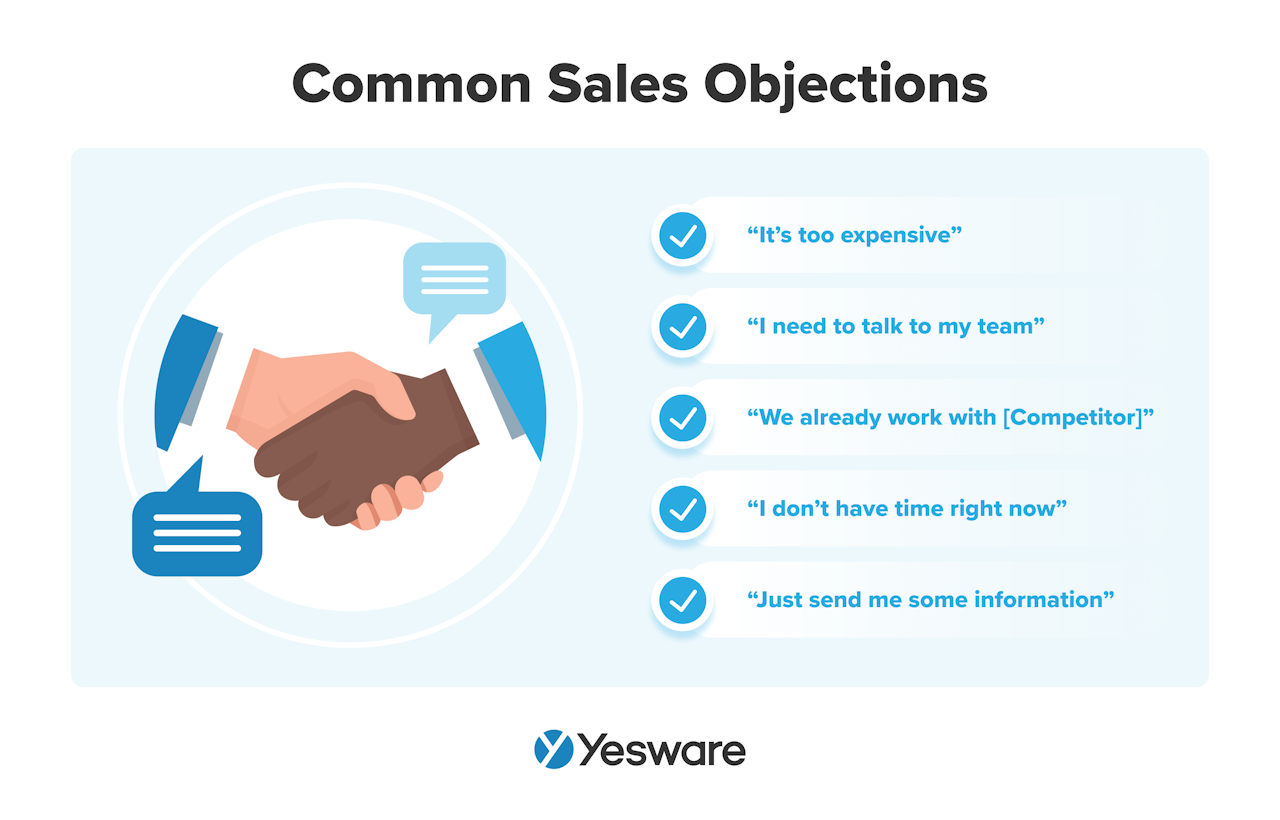 Top-performing sales pros plan responses to common objections in advance so they can handle them smoothly and move more prospects toward the close.
Top-performing sales pros plan responses to common objections in advance so they can handle them smoothly and move more prospects toward the close.
Conclusion
Cold calling is a strategy with clear benefits that many sales professionals avoid. To be successful, it’s critical that you make a plan and stick to it.
Go to your calendar and schedule your cold calling blocks right now. Choose times early in the morning or late in the afternoon. Once you’ve gotten started, you can begin experimenting from there.
Be sure to follow up with your prospects. Consistent follow-up can help you reach more prospects and get some early wins.
Keep it up, and you won’t just start closing more deals… you’ll build new habits that will transform your career.
This guide was updated on June 13, 2023.
Get sales tips and strategies delivered straight to your inbox.
Yesware will help you generate more sales right from your inbox. Try our Outlook add-on or Gmail Chrome extension for free, forever!
Related Articles
Anya Vitko
Anya Vitko
Jenny Keohane
Sales, deal management, and communication tips for your inbox
![Cold Calling Guide with Proven Tips and Examples [Backed by Data]](/blog/_next/image/?url=https%3A%2F%2Fwww.yesware.com%2Fwp-content%2Fuploads%2F2021%2F01%2Fcold-calling-yesware.png&w=1984&q=75)
